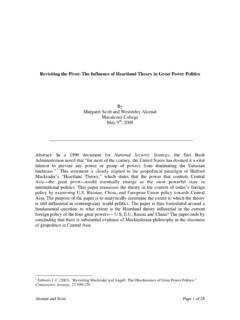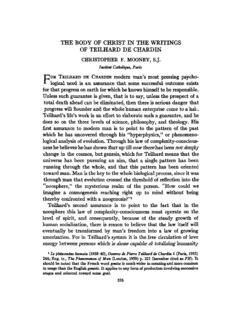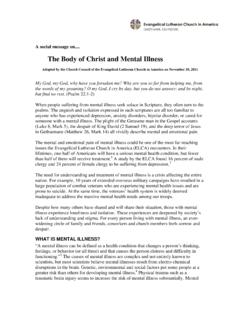Transcription of j-GIRM 03-The Body of Christ - Creighton University
1 IX. The body of Amen! This is the ninth in a series of eleven or so articles on the celebration of the Mass. Article #10 is entitled, Proceeding with Communion I The body of The minister of Communion speaks this phrase often, The body of Christ . Ministers of the Eucharist say it thousands of times in churches every Sunday. Doesn t it just become part of the routine of our lives both for ministers and faithful alike? And yet, doesn t it also take on greater significance from time to time, or at special moments of our lives one s first communion, one s wedding, or at the funeral of a loved one?
2 How might we deepen our awareness of the meaning of this small gem of a dialogue? What is its purpose? It is a statement of belief that the gathered Church makes in Christ s presence in the Eucharist. It is further an acknowledgement of the presence of Christ in the faithful and union with Christ in his body , the Church. See how St. Augustine framed both of these aspects of the mystery of the body of Christ in the early 5th century: If you wish to understand the body of Christ , listen to the Apostle as he says to the faithful, You are the body of Christ and His members.
3 (1 Cor 12: 27) If therefore, you are the body of Christ and His members, your mystery has been placed on the Lord s table, you receive your mystery. You reply Amen to that which you are, and by replying, you consent. For you hear, The body of Christ , and you reply, Amen. Be a member of the body of Christ so that your Amen may be true. But, why in bread? .. Let us listen to the Apostle who said, We though many, are one bread, one body . (1 Cor 10:17) [Augustine, Sermon 272 (dated 405-411) Ed PL ] Here is the reason why ministers of Communion are instructed to say, The body of Christ , and not This is Jesus, or Receive the body of Christ .
4 This brief and humble acclamation invites all the faithful to recognize the body of Christ in the consecrated bread and in the People of God receiving Communion! It is an open-ended acclamation: You reply Amen to that which you are, and by replying, you Be a member of the body of Christ so that your Amen may be true! 1. Gestures of Reverence at Communion Recognizing the power of gestures and the importance of the body , the General Instruction directs the faithful to employ several gestures of reverence as part of receiving Communion: standing, a head bow, and receiving either on the tongue or in the hand.
5 The norm for reception of Holy Communion in the dioceses of the United States is standing. Communicants should not be denied Holy Communion because they kneel. Rather, such instances should be addressed pastorally, by providing the faithful with proper catechesis on the reasons for this norm. (GIRM 160) a) How is Standing an Act of Reverence? The statement The body of Christ , not only reminds us that the bread we see has been transformed but it also reminds us that we, the recipients, are being transformed into what we receive.
6 Redeemed by Christ , we are no longer alienated sinners but now intimately connected to Christ and one another through his body and Blood. So, all proceed to Communion as a people who signify the body of Christ , risen in glory. The Greek word for resurrection means that Jesus stood up! something the dead do not do. The faithful manifest the body of Christ , therefore, as risen and graced. Recall, too, how St. Augustine counseled us that Communion is more than a private moment with our Lord. It is also a moment of union with our brothers and sisters, members of the same body of Christ .
7 When receiving Holy Communion, the communicant bows his or her head before the Sacrament as a gesture of reverence and receives the body of the Lord from the minister. The consecrated host may be received either on the tongue or in the hand, at the discretion of each communicant. When Holy Communion is received under both kinds, the sign of reverence is also made before receiving the Precious Blood. (GIRM 160) b) How is Receiving Communion in the Hand an Act of Reverence? St. Cyril of Jerusalem told his newly baptized, Make a throne of your hand to receive the Lord of Life!
8 Others picture their hand as a beggar s bowl, coming, hungry, to receive the Bread of Life. Still others find a feeling of sorrow or emptiness rising up when they cup their hands. Yet others express a profound sense of humility as they approach to receive the Lamb of God. Attending to these, and other such experiences of one s open palm, can put a person in touch with a deep sense of longing, desiring, and reverence for the One he / she is about to receive. c) How is Amen an Act of Reverence? Saying Amen, means we assent to our faith with our head and heart and will.
9 Not only do we believe in the real presence but we also commit ourselves to living and acting as Jesus did and does. Tertullian, a 3rd century North African theologian, applied the Latin term sacramentum to the rites of baptism and Eucharist. Sacramentum referred to the oath of allegiance that soldiers made to the Roman emperor to serve him, even with their life. At this time in the Church s history, persecutions were common enough to make baptism into Christ a commitment that could mean dying for the faith. Thus, saying Amen to the sacrament of the body and Blood of Christ serves as a Catholic pledge of allegiance to follow Christ .
10 The Communion Rite includes: The Lord s Prayer the Sign of Peace the Breaking of the Bread (the Fraction Rite) Communion the Prayer After Communion d) How is Receiving Communion Itself an Act of Reverence? The act of receiving is itself another powerful and meaningful gesture. To receive means to get, to obtain, to admit, to let in, and to accept. It implies a certain openness in the person receiving. It points to a hoped-for capacity in the person to be nourished by what one receives and to be nourished by the generosity of the Giver.


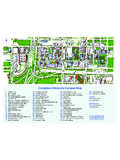
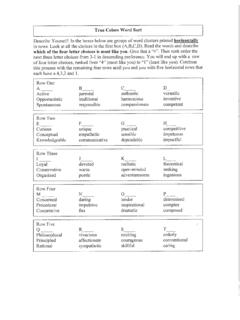



![Hearing protection [Read-Only] - Creighton University](/cache/preview/9/6/e/e/8/f/d/c/thumb-96ee8fdc2111eb2b05b9b613f7af1575.jpg)
